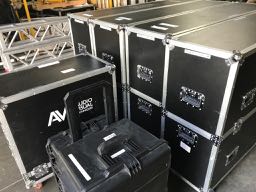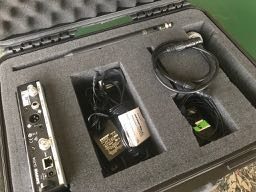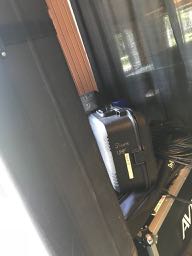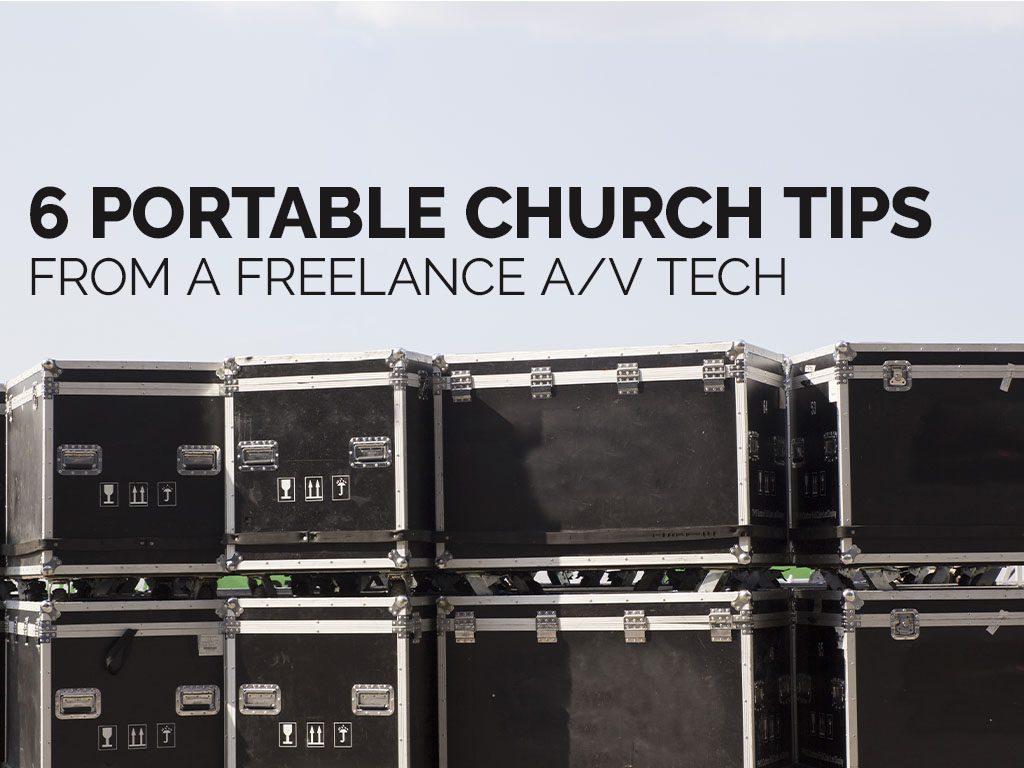Each week, hundreds of churches convert school auditoriums, movie theaters, meeting rooms, and various other spaces into temporary sanctuaries. That’s a huge effort. On a daily basis, professional audio-video companies put on thousands of shows, many on similar schedules and often with much larger technical sets too. After doing freelance A/V since 2000, I would like to share six A/V tips that might help your church.
First, please resist making excuses. Just because church volunteers are not A/V professionals does not mean that they cannot create professional results. By following a few best practices and helping volunteers learn, your church can get there. It’s a process.
#1 – Teach Volunteers Best Practices
Churches run on volunteer effort, but that does not mean that “volunteer” needs to be a nice way of saying “sub-par.” Training is the key here. Training has two purposes: making people more efficient and saving money.
Take cable-wrapping as an example. The gut-instinct of people who have never wrapped a cable professionally is to grab one end and wrap it around their forearm repeatedly. Seeing someone do that makes nearly every professional A/V tech wince. As counter-intuitive as it might be to someone who is volunteering at church, the right way is to make a loop with the cable twisting in one direction and then the other, back and forth. This preserves the cable AND allows it to be unwrapped much more quickly.
Training church volunteers in best-practices of live-event tech will help save money, time, and keep gear in good shape.
#2 – Rack As Much As You Can and Make Sure Everything Has a Case
If your church is doing the same set every week, you have an advantage that many professionals don’t have – you will already know what goes where.

If your church uses four wireless mics every week, put them in a rack with all the cables neatly organized. If you always have a computer and a monitor set up in the same spot, put them in a rack. Ideally, you may also have a single power cable connected to the rack and only the cables you need to deliver or receive the A/V signals connecting to the outside.
If you are always connecting the same cables between two pieces of gear that are always on top of one another, putting them in a rack and leaving them connected will also save wear and tear on the cables and the components themselves.
If certain pieces of gear can’t be racked up, put them in road cases. Resist the temptation to save the money and just keep them in their original boxes or tell people to “just be careful.” Road cases will prevent wear and tear.
 Even when you’re careful, mistakes will happen. People trip. Rocks stop wheels suddenly. Ramps get slippery in the rain. Give your gear the best chance by protecting it in hard-sided cases like those manufactured by [amazon_textlink asin='B0002INQT2′ text='Pelican' template='ProductLink' store='churc0da-20′ marketplace='US' link_id='0b4446bf-6482-11e8-804d-2f6f65cf18fa'] and [amazon_textlink asin='B00622FL36′ text='SKB' template='ProductLink' store='churc0da-20′ marketplace='US' link_id='1bf83ef3-6482-11e8-b66a-f39bda01e954′].
Even when you’re careful, mistakes will happen. People trip. Rocks stop wheels suddenly. Ramps get slippery in the rain. Give your gear the best chance by protecting it in hard-sided cases like those manufactured by [amazon_textlink asin='B0002INQT2′ text='Pelican' template='ProductLink' store='churc0da-20′ marketplace='US' link_id='0b4446bf-6482-11e8-804d-2f6f65cf18fa'] and [amazon_textlink asin='B00622FL36′ text='SKB' template='ProductLink' store='churc0da-20′ marketplace='US' link_id='1bf83ef3-6482-11e8-b66a-f39bda01e954′].
#3 – Wheels Are Your Friends

Until you’ve moved hundreds of pounds of gear into and out of a venue, you don’t realize just how helpful wheels are. A briefcase-sized road case might not have them, but you can stack it on another road case that does.
Wheels multiply your strength. One person can move much more gear in the time it would take that same person to carry a piece or two. Whenever possible, put everything you can on wheels.
#4 – Organize Cables by Length and Function
During set up an audio tech should be able to quickly and easily find a 25-foot XLR cable and the lighting tech should be able to pick out a 50-foot, 3-pin DMX in a matter of seconds. To someone untrained, those two cables might look identical.
Create a system to make this as easy as possible. One helpful system is to put colored electrical tape on each end of each cable. For an audio XLR cable use purple and for DMX use yellow. Next, add another color for length. Red for 25-foot, green for 50, and blue for 100. Using this type of system makes it quick and easy to identify that purple and red is the cable the audio tech was looking for and yellow and green is the DMX cable.
To keep cables tidy, make sure that each cable has a piece of tie line, velcro, or some other fastener attached so that each cable can keep from tangling with the others it is stored with. And use a bin or road case for each cable size and type or a single case with dividers.
#5 – Find a Good Place for “Deads”

When loading in and setting up, you might think that all the empty cases (a.k.a. “dead cases”) are just adding to your work because you have to take them back out to the van or trailer to hide them during church.
Instead, hide them out of sight. Are you on a portable stage? Store them under it. Have pipe and drape covering a wall? Put them behind it. Is there a closet where chairs are stored during the week? Store your empty cases there.
#6 – Good Tech Is Safe Tech
It might be tempting to think that cables lying on the ground are pretty obvious to people walking by, but tripping hazards are serious and cables are often overlooked. There are simple tricks to make cables safer.
If there are only a few cables, they could be taped down using duct tape or gaffer tape (which is better and more expensive). This tape will need to be replaced weekly. For better cable management and safety, run cables along walls whenever possible. This is normally a pretty safe path. Rugs are also a decent way to cover cables and make them less of a tripping hazard, but cable tracks (a.k.a. walkovers and yellow jackets) are even better.
There are simple practices and systems that can help church A/V management become more efficient and safer. Inquire if your church has members with a background in A/V or live-production who may be able to help. Their expertise and valuable insights can really help improve the process in the long run.





You made an interesting point when you talked about how it is a good idea to store empty cases under a portable stage when you are using one for a portable church. I would think that it would be a good idea to make sure that you use some kind of decorative sheet or tarp so that the cases aren’t visible. I would think that a portable stage would be a lot more attractive if you can’t see what is under it.